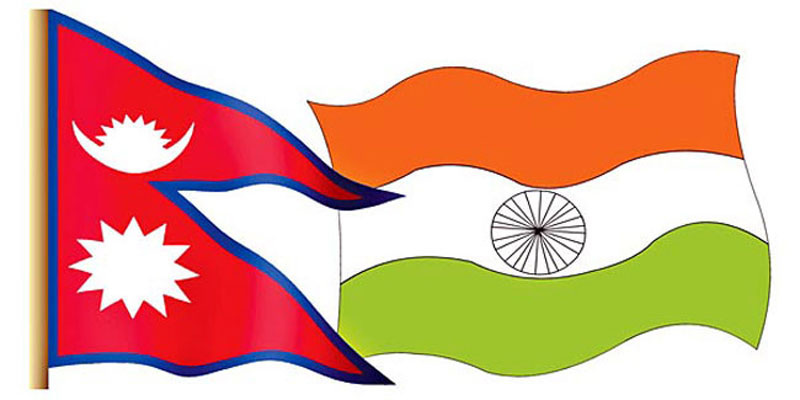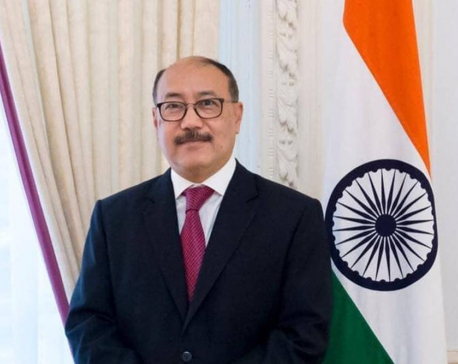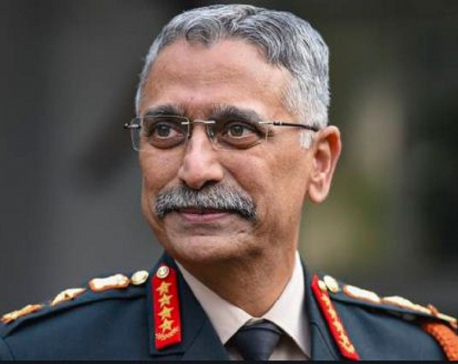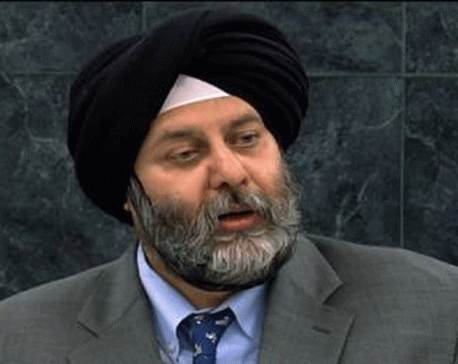
OR

PM Oli aggravated the standoff by publicly blaming Modi government, Indian media and the Indian intellectuals of trying to topple down his government.
When relations between the two states deteriorate due to various reasons, dialogue is a tool to bring them back on track. Closing all prospects for talks means the individual state does not want to keep relations at all.
This is what seems to be happening between Nepal and India at the moment.
Relations between the two closest neighbors in South Asia are fraught now. The government of Prime Minister Narendra Modi looks unwilling to talk to the government of Prime Minister K P Sharma Oli. In other words, there is a trust deficit between the two governments.
Nepal endorsing the new map including the India-encroached territories of Limpiyadhura, Lipulekh and Kalapani has displeased Modi government. Modi government ignored Nepal’s proposal for diplomatic dialogue, citing Covid-19 pandemic. This was not the appropriate response from Indian side but PM Oli aggravated the standoff by publicly blaming Modi government, Indian media and the Indian intellectuals, accusing them of trying to topple down his government. This is unfair.
Head of the government should understand the value of diplomacy in maintaining friendly relations with other countries. This is why, it is said, foreign policy conducts must be exercised by experienced, highly educated, intelligent and tactful persons. Foreign policy conduct must not be guided by emotions and whims. It is a matter of consistent persuasion and promotion of national interest all the time.
States exercise track-1, track-2, track-3 and even track-4 diplomacy to soften the harsh tone. But the way PM Oli used words to blame Modi government shows Nepal has failed to demonstrate diplomatic skills to sort out issues between the two countries. It seems the government of K P Oli has lost sense of diplomacy.
Let us think from the Indian perspective. India at the moment is in serious standoff with China. The two countries are almost in war-like situation in Ladakh. Thus resolving Limpiyadhura-Lipulekh-Kalapani issue may not have become the priority of India at the moment. Since the Nepali regime had not raised the issue for long, Indian side may have thought nothing will change overnight.
The government of K P Oli has committed some diplomatic blunders. After President Xi Jinping’s visit to Nepal in October last year, the government allowed Communist Party of China (CPC) and its experts to conduct virtual summit to train cadres of Nepal Communist Party (NCP) as if Nepal has already become a communist state. It allowed the state apparatus to be used to please CPC and its leadership along with their trainers to spread the communist doctrine in Nepal.
This is a serious case because Nepal’s political system is based on Westminster model of parliamentary system. Besides, the cabinet members decide the state affairs as per the spirit of the constitution of Nepal. But the government here is taking major decisions as per the will and wish of its party secretariat and standing committee. The decisions of party secretariat and standing committee are then endorsed by the cabinet. Take the case of Millennium Challenge Corporation (MCC) compact. Instead of parliament deciding whether to endorse it or not, the party committees are dictating the matter.
Nepal is caught between three sets of geopolitical traps—the Indo-Pacific Strategy (IPS) of the US, Belt and Road Initiative (BRI) of China and territorial encroachment by India. A case of encroachment from Chinese side was also reported but the Ministry of Foreign Affairs has refuted such report.
On the other hand, PM Oli’s accusation of India plotting to unseat him from power has been refuted by none other than his party colleague and co-chair Puspah Kamal Dahal. Is India working to unseat Oli? We don’t know. But unless Nepal becomes able to stand on its own, India’s hegemonic influence will remain a reality in Nepali politics.
The 2015 blockade failed to stem the rise of Oli. Instead, it helped Oli to reemerge as a powerful leader. This is one example of how Indian hegemony in Nepal backfires sometimes. Oli tried to rally popular support behind him by publishing the new map when his government was on the verge of collapse due to corruption scandals.
The government is formed by the parliament and it is the parliament that decides whether to continue with the current regime or replace it. Oli undermined the power of legislature by blaming India.
The author is a scholar of security and strategic studies
You May Like This

Indian Foreign Secretary Shringla’s visit to Nepal later this month expected to restore bilateral trust
KATHMANDU, Nov 10: Indian Foreign Secretary Harsh Vardhan Shringla will pay an official visit to Nepal from November 26 to... Read More...

Indian Army Chief Naravane to visit Nepal next month
KATHMANDU, Oct 14: Indian Army Chief Manoj Mukund Naravane will visit Nepal next month, the Nepal Army headquarters said in... Read More...

India ready to help with Nepal's journey to prosperity: Ambassador Puri
KATHMANDU, Dec 12: India's Ambassador to Nepal Manjeev Singh Puri today said India was always ready to help with Nepal's journey... Read More...




Just In
- Govt receives 1,658 proposals for startup loans; Minimum of 50 points required for eligibility
- Unified Socialist leader Sodari appointed Sudurpaschim CM
- One Nepali dies in UAE flood
- Madhesh Province CM Yadav expands cabinet
- 12-hour OPD service at Damauli Hospital from Thursday
- Lawmaker Dr Sharma provides Rs 2 million to children's hospital
- BFIs' lending to private sector increases by only 4.3 percent to Rs 5.087 trillion in first eight months of current FY
- NEPSE nosedives 19.56 points; daily turnover falls to Rs 2.09 billion
















Leave A Comment